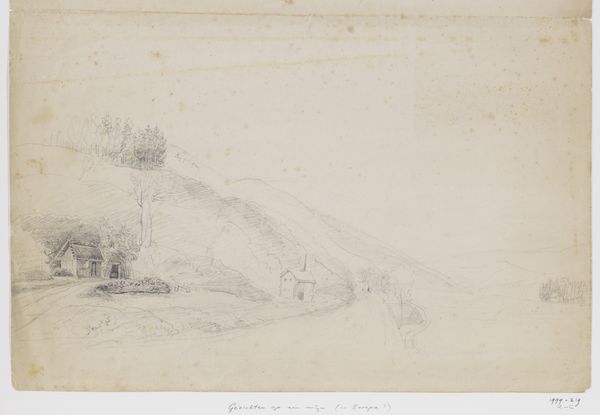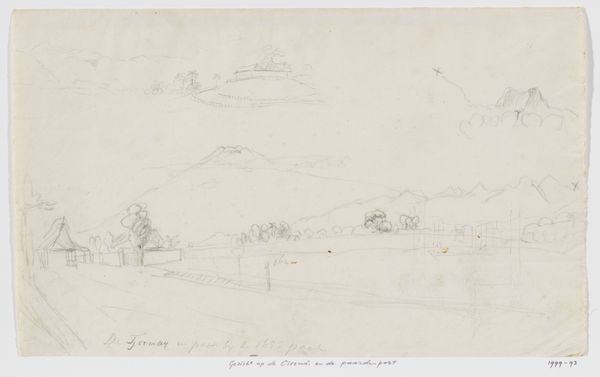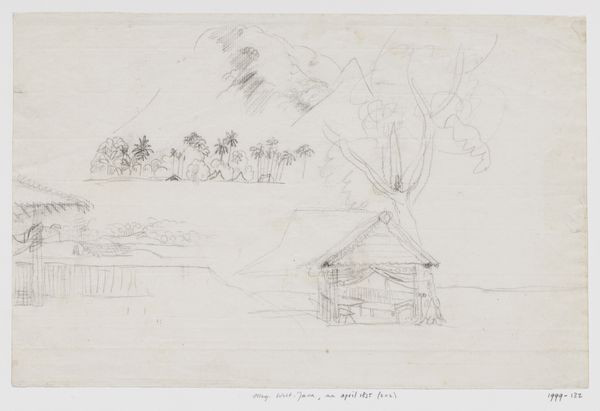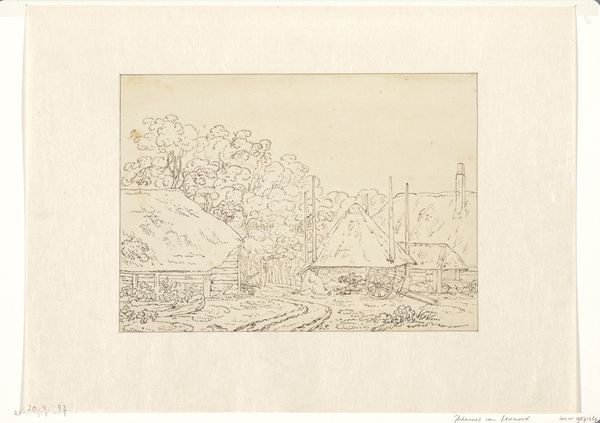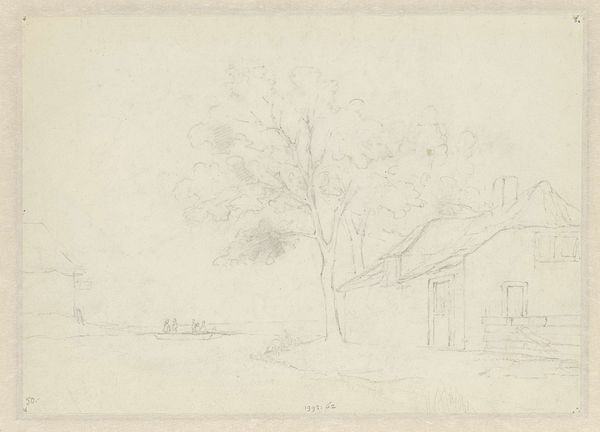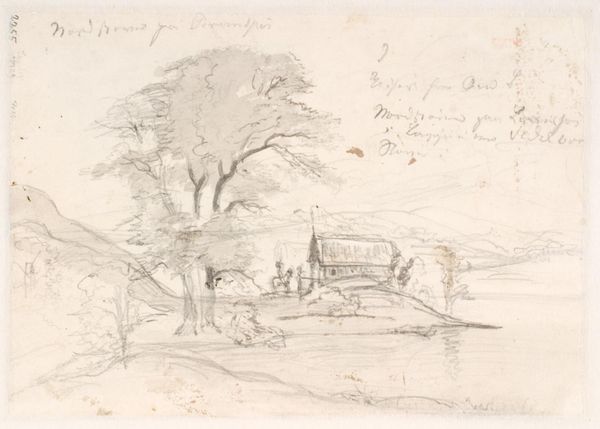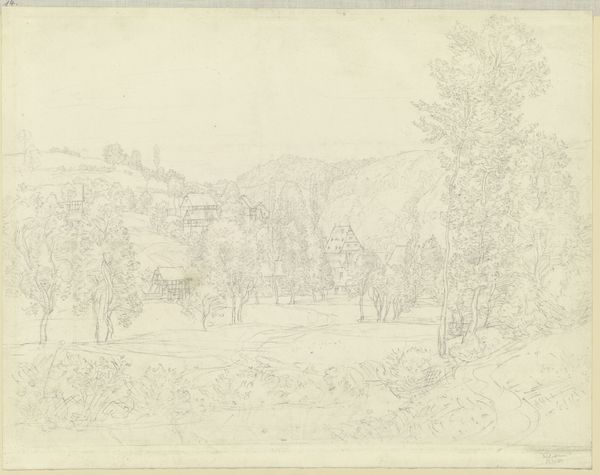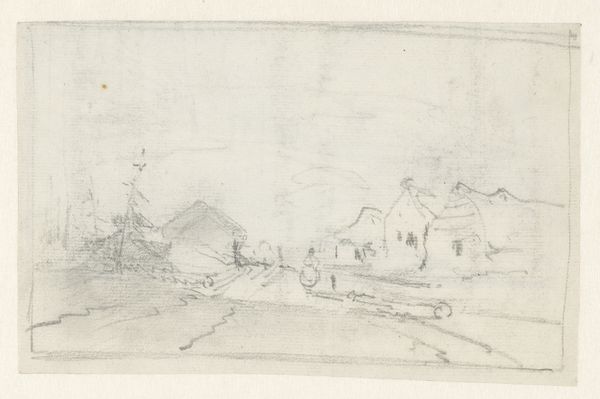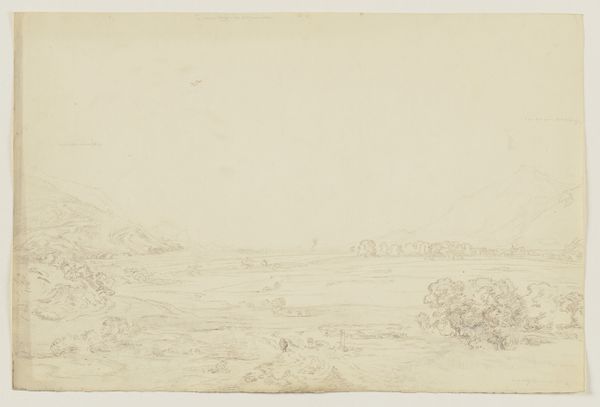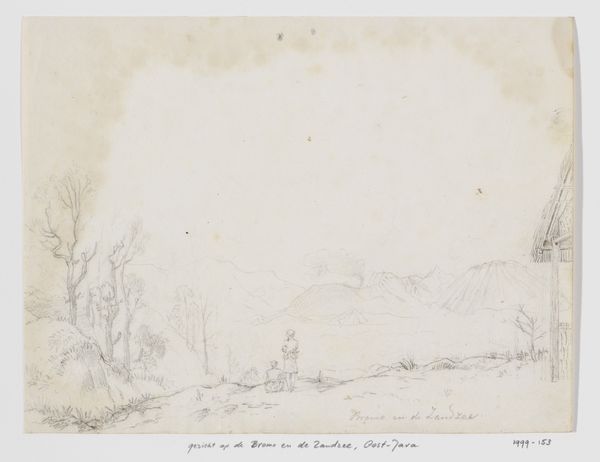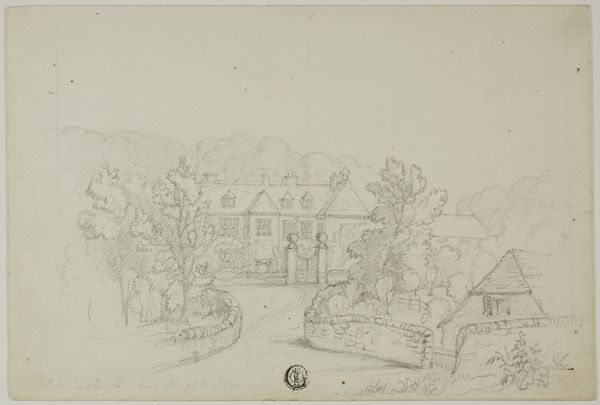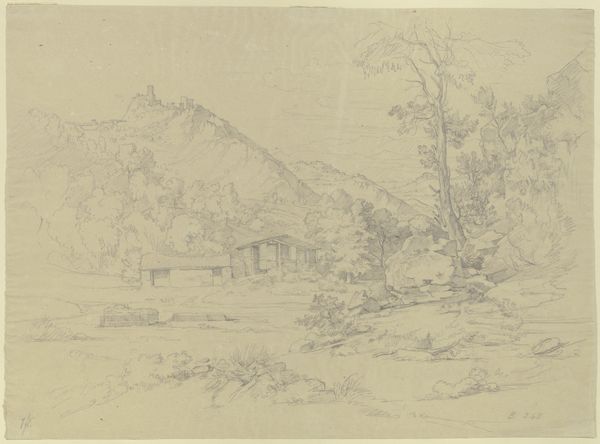
drawing, pencil
#
drawing
#
water colours
#
landscape
#
pencil
#
realism
Dimensions: height 212 mm, width 337 mm
Copyright: Rijks Museum: Open Domain
Curator: We're looking at a pencil and watercolour drawing by Adrianus Johannes Bik, entitled "Mijn (in Europa?)". It's thought to have been made sometime between 1846 and 1872. Editor: It’s so faint! Like a memory sketched onto the page. The delicate pencil lines create a subdued, almost dreamlike quality, don't you think? Curator: I agree. It’s certainly a gentle piece. One can feel a certain stillness in its composition and technique, perhaps evoking a sense of rural life during that period and reminding the viewer of the everyday reality lived by ordinary Europeans. Editor: The way Bik uses these pale watercolors is interesting; he seems to be defining shape and space without calling too much attention to color, or even saturation. Curator: The tentative title – "Mijn (in Europa?)" which translates to 'Mine (in Europe?)' – is itself intriguing. It suggests a personal connection, perhaps a sense of ownership or belonging, yet tinged with uncertainty about location, raising questions about identity and place within the socio-political context of Europe at that time. Editor: Exactly, and it begs the question: Mine in Europe? Compared to elsewhere? Or a question about the feeling of “mine”-ness being something found in Europe at all? Either way it draws the eye and mind out and makes me want to know the story around the artist’s perspective and the use of such fine lines for conveying this vision. Curator: One reading is that the uncertainty in the title implies concerns around cultural identity and territory, themes especially important at a time of great political change. It would certainly fit with broader discourses happening across Europe in the 19th Century. Editor: Fascinating, isn't it, how a simple sketch can resonate with complex questions of belonging and identity, the lines alluding not just to form but to something far greater beyond its form? Curator: Indeed, a simple vista prompting broader questions about individual and collective identity. Editor: And from an artist and artistic standpoint as well.
Comments
No comments
Be the first to comment and join the conversation on the ultimate creative platform.
